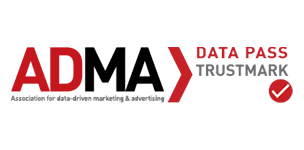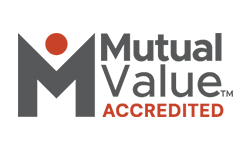SMS and email scams, also known as ‘Phishing’ continues to be one of the most prevalent scams reported in Australia. These scams trick people into giving out their personal information, from online banking passwords to social security numbers and even business login details.
These messages, emails or calls seem to come from legitimate and trusted businesses and are often disguised as banks or other financial institutions, telecommunications providers or a postal delivery service and generally include a link or attachment where you’re asked to confirm your personal or bank details. Other examples include scams to:
- Verify a payment
- Say you're eligible for a refund
- Advise a recent payment has failed with a link to a form asking for your card details to make said payment
- Let you know that your internet, account, or computer has been hacked
- Direct you to a website and hack into your details
It’s important to be cautious of people who are especially interested in getting money or personal details out of you. For more information visit Scamwatch.
Warning signs and what to look for
- Unexpected or unsolicited contact by a person or organisation you’ve never dealt with
- You’re asked to provide personal information
- Links in emails or text messages sending you to logins or requesting personal details
- The message has poor grammar or spelling errors
- Requests for immediate action to transfer money or that there is a problem with your computer, delivery or threatening to stop a service for example.
How to protect yourself
- Pay attention to red flags and follow your intuition if something feels off
- Do your own independent search on a company – if the company name is known to you, a scammer may be impersonating one of their representatives. Find the company’s website or phone number and confirm with them directly if the opportunity is legitimate. Do not use the information you’ve been given, find and verify it independently.
- Delete suspicious messages immediately
- Always navigate to online banking yourself, don’t use links in emails or SMS messages
What to do if you have been scammed
If you suspect or have been targeted by an SMS and Email scam:
- Contact us immediately (How to report fraud or scams)
- Cease all communication with the person
- Change your online banking passwords and card PIN
- Contact IDCARE on 1800 595 160. IDCARE is a free, government-funded service that provides support to victims of identity crime
- Report the scam online to Scamwatch
Lock your card
- Log into our Mobile App and select "Cards" from the Menu and select "Lock Card"
Report lost, stolen or captured card
- Please contact us immediately if your G&C Mutual Bank credit or debit card is lost, stolen or captured. Call us on 1300 364 400, 24 hours a day, 7 days a week.
- For overseas assistance, call us on +61 2 9307 5400 or contact Visa Global Customer Assistance +1 303 967 1090 (international) or the VISA International Hotline specific to the country you are in.
- Email us with the subject: URGENT lost or stolen card
- Contact us before you travel overseas so we can monitor your account more closely. You will also avoid transactions on your cards being stopped by us when we detect overseas purchases. We will need to know your departure date, return date, destination and contact details while you’re away.
- Alternatively, you can complete the Overseas Travel Form within our Mobile App.
- Read more about staying financially safe overseas to ensure your travels are memorable for all the right reasons.







